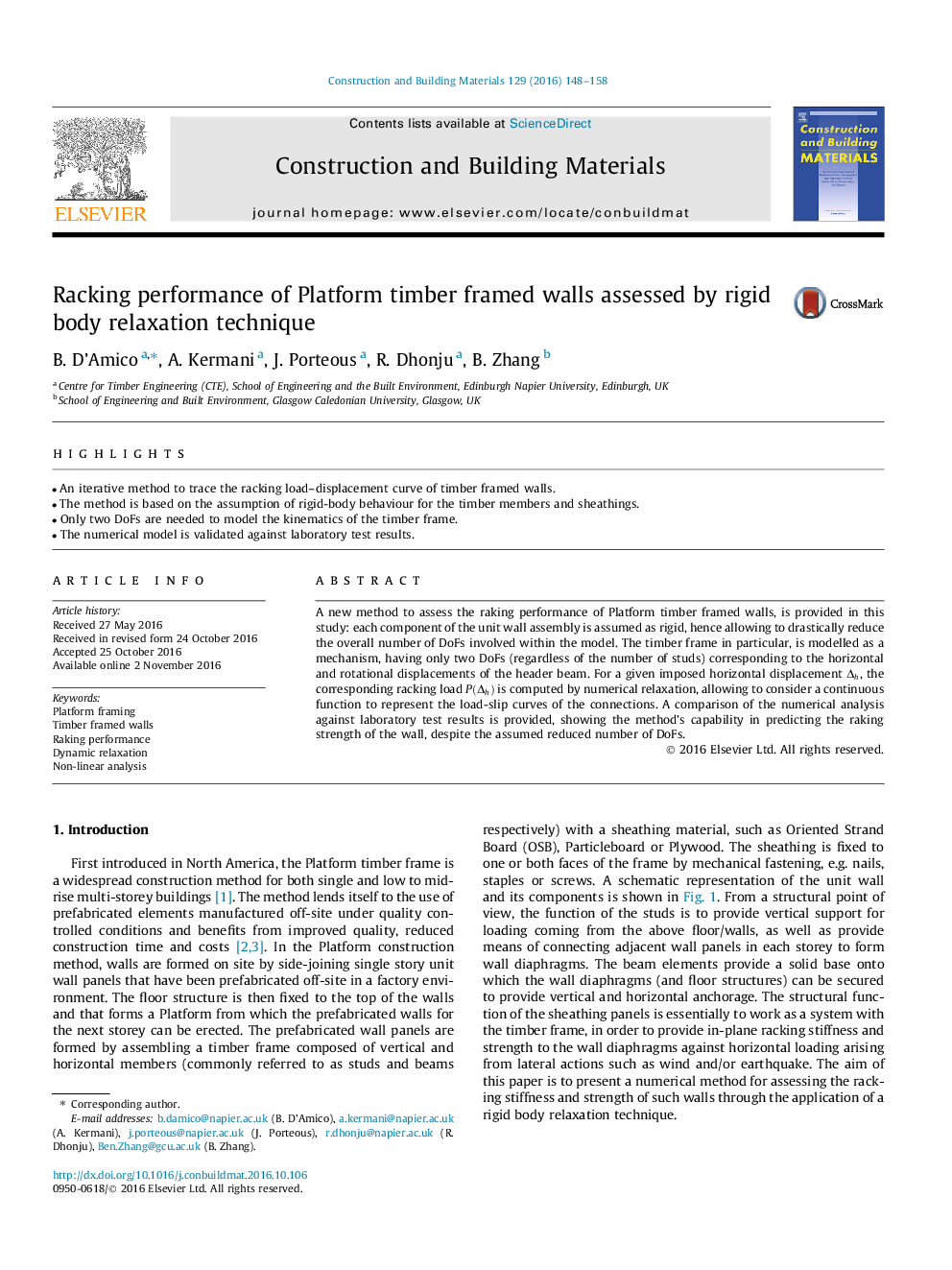| Article ID | Journal | Published Year | Pages | File Type |
|---|---|---|---|---|
| 4913901 | Construction and Building Materials | 2016 | 11 Pages |
Abstract
A new method to assess the raking performance of Platform timber framed walls, is provided in this study: each component of the unit wall assembly is assumed as rigid, hence allowing to drastically reduce the overall number of DoFs involved within the model. The timber frame in particular, is modelled as a mechanism, having only two DoFs (regardless of the number of studs) corresponding to the horizontal and rotational displacements of the header beam. For a given imposed horizontal displacement Îh, the corresponding racking load P(Îh) is computed by numerical relaxation, allowing to consider a continuous function to represent the load-slip curves of the connections. A comparison of the numerical analysis against laboratory test results is provided, showing the method's capability in predicting the raking strength of the wall, despite the assumed reduced number of DoFs.
Related Topics
Physical Sciences and Engineering
Engineering
Civil and Structural Engineering
Authors
B. D'Amico, A. Kermani, J. Porteous, R. Dhonju, B. Zhang,
